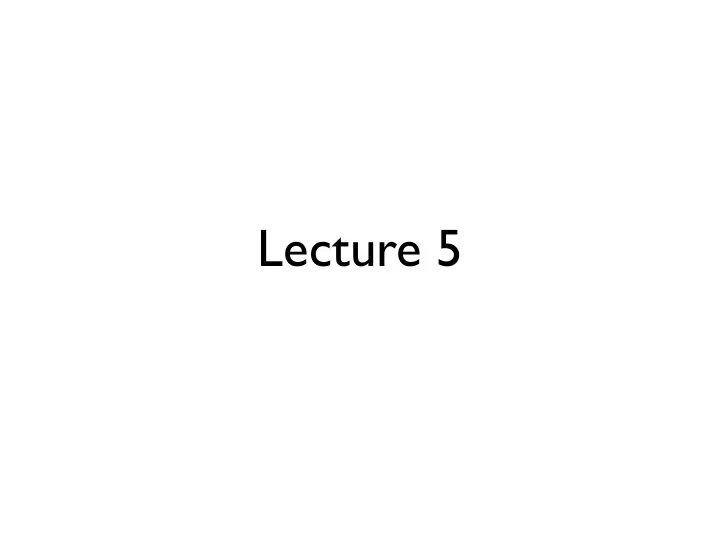

Lecture 5
The Acceptance Problem for TMs A TM = { <M,w> | M is a TM & w ∈ L(M) } Theorem: A TM is Turing recognizable Pf: It is recognized by a TM U that, on input <M,w>, simulates M on w step by step. U accepts iff M does. ☐ U is called a Universal Turing Machine (Ancestor of the stored-program computer) Note that U is a recognizer, not a decider.
Programming ENIAC, circa 1947 http://en.wikipedia.org/wiki/ENIAC
Cardinality Two sets have equal cardinality if there is a bijection between them A set is countable if it is finite or has the same cardinality as the natural numbers Examples: Σ * is countable (think of strings as base-| Σ | numerals) Even natural numbers are countable: f(n) = 2n The Rationals are countable
More cardinality facts If f: A → B in an injective function (“1-1”, but not necessarily “onto”), then |A| ≤ |B| (Intuitive: f is a bijection from A to its range, which is a subset of B, and B can’t be smaller than a subset of itself.) Theorem (Cantor-Schroeder-Bernstein): If |A| ≤ |B| and |B| ≤ |A| then |A| = |B|
The Reals are Uncountable Suppose they were int 1 2 3 3 5 List them in order 1 0. 0 0 0 0 0 2 3. 1 4 1 5 9 Define X so that its i th 3 0. 3 3 3 3 3 digit ≠ i th digit of i th real ... 4 0. 5 0 0 0 0 Then X is not in the list 5 2. 7 1 8 2 8 6 41. 9 9 9 9 9 Contradiction . . . . . . X 1. 2 4 1 3 8 ... A detail: avoid .000..., .9999... in X
Number of Languages in Σ * is Uncountable Suppose they were w 1 w 2 w 3 w 4 w 5 w 6 1 L 1 0 0 0 0 0 0 List them in order L 2 1 1 1 1 1 1 Define L so that w i ∈ L L 3 0 1 0 1 0 1 ... ⇔ w i ∉ L i L 4 0 1 0 0 0 0 L 5 1 1 1 0 0 0 Then L is not in the list L 6 1 1 1 1 0 1 . . . . Contradiction . . L 1 0 1 1 1 0 ...
“Most” languages are neither Turing recognizable nor Turing decidable Pf: “< >” maps TMs into Σ * , a countable set, so the set of TMs, and hence of Turing recognizable languages is also countable; Turing decidable is a subset of Turing recognizable, so also countable. But by the previous result, the set of all languages is un countable.
A specific non-Turing- recognizable language Let M i be the TM w 1 w 2 w 3 w 4 w 5 w 6 encoded by w i , i.e. 1 <M 1 > 0 0 0 0 0 0 <M i > = w i <M 2 > 1 1 1 1 1 1 (M i = some default machine, if <M 3 > 0 1 0 1 0 1 ... w i is an illegal code.) <M 4 > 0 1 0 0 0 0 <M 5 > 1 1 1 0 0 0 i, j entry tells whether <M 6 > 0 1 0 0 0 1 M i accepts w j . . . . . Then D is not recognized . by any TM D 1 0 1 1 1 0 ...
Theorem: The class of Turing recognizable languages is not closed under complementation. Proof: The complement of D, is Turing recognizable: On input w i , run <M i > on w i (= <M i >); accept if it does. E.g. use a universal TM on input <M i ,<M i >>
Theorem: The class of Turing decidable languages is closed under complementation. Proof: Flip q accept , q reject
⊂ Decidable Recognizable ≠ co- recognizable recognizable decidable
Recommend
More recommend